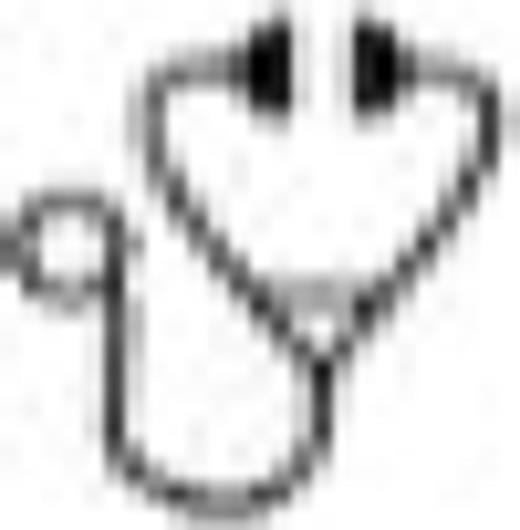Abstract

Background: Previous studies evaluating the simplified Pulmonary Embolism Severity Index (sPESI) for predicting pulmonary embolism (PE) mortality did not consistently report the timing of vital sign measurement (systolic blood pressure [SBP], heart rate [HR] and oxygen [O2] saturation) relative to the PE presentation.
Objectives: To evaluate the impact of vital sign measurement timing on sPESI's ability to identify PE patients at low-risk for in-hospital all-cause mortality.
Methods: This was a retrospective analysis of PE patients from a large, urban teaching hospital in the Northeastern United States. Consecutive patients, diagnosed with PE between November 2010 and May 2015, were identified using the institution's billing system. To be eligible for inclusion, patients had an International Classification of Diseases, ninth-revision, clinical modification (ICD-9-CM) code of 415.1x in the primary position. Those in whom PE could not be objectively confirmed via chart review and those receiving thrombolysis or embolectomy were excluded. Patients' first and either lowest (SBP, O2 saturation) or highest (HR) value within the first 24 hours from presentation (subsequently referred to as "least favorable" values) were recorded. We then compared sensitivity, specificity and negative predictive values (NPV) and 95% confidence intervals (CIs) and the ability of the sPESI to predict all-cause in-hospital mortality using the first and least favorable vital signs.
Results: A total of 562 PE patients (18.9% >80 years of age, 28.5% history of cardiopulmonary disease, 29.5% history of cancer) were included and 2.1% died in-hospital. No differences in sPESI's sensitivity, specificity or NPV were observed when scored using the first or least favorable vital sign values. sPESI classified 169 (30.1%) as low-risk (sPESI=0) vs. 153 (27.2%) when the least favorable vital sign value was used.
Conclusions: The sensitivity and NPV of sPESI to predict PE patients' risk for all-cause in-hospital mortality is not affected by the timing of vital sign measurement. Using the least favorable value within 24-hours of presentation does result in a smaller proportion of patients being classified as low-risk.
| Characteristic . | First % (95%CI) . | Least Favorable % (95%CI) . | P-value . |
|---|---|---|---|
| Sensitivity | 91.7 (59.8-99.6) | 91.7% (59.8-99.6) | >0.99 |
| Specificity | 30.5 (26.8-34.6) | 27.6% (24.0-31.6) | 0.31 |
| NPV | 99.4 (96.2-99.9) | 99.3% (95.9-99.9) | 0.94 |
| Proportion classified as low-risk, n (%) | 169 (30.1) | 153 (27.2) | <0.001 |
| Characteristic . | First % (95%CI) . | Least Favorable % (95%CI) . | P-value . |
|---|---|---|---|
| Sensitivity | 91.7 (59.8-99.6) | 91.7% (59.8-99.6) | >0.99 |
| Specificity | 30.5 (26.8-34.6) | 27.6% (24.0-31.6) | 0.31 |
| NPV | 99.4 (96.2-99.9) | 99.3% (95.9-99.9) | 0.94 |
| Proportion classified as low-risk, n (%) | 169 (30.1) | 153 (27.2) | <0.001 |
Comparison of the Ability of sPESI to Predict All-Cause In-Hospital Mortality using the First and Least Favorable Recorded Vital Signs
CI=confidence interval; n=number; NPV=negative predictive value
Rozjabek:Janssen Scientific Affairs, LLC: Other: Internship. Fermann:Janssen Pharmaceuticals: Consultancy, Speakers Bureau; Novartis: Research Funding; Cardiorentis: Research Funding; Cardioxyl: Research Funding; Cempra Pharmaceuticals: Research Funding; Trevena: Research Funding; Intersection Medical: Consultancy, Research Funding; Siemens: Research Funding; The Mayday Foundation: Research Funding; Pfizer: Research Funding. Peacock:Abbott: Research Funding; Alere: Research Funding; Banyan: Research Funding; Cardiorentis: Research Funding; Janssen Pharmaceuticals: Consultancy, Research Funding; Portola: Consultancy, Research Funding; Roche: Consultancy, Research Funding; The Medicines Company: Consultancy, Research Funding; Prevencio: Consultancy; Singulex: Consultancy; Comprehensive Research Associates, LLC: Equity Ownership; Emergencies in Medicine, LLC: Equity Ownership. Crivera:Janssen Scientific Affairs, LLC: Employment, Equity Ownership. Schein:Janssen Scientific Affairs, LLC: Employment. Coleman:Janssen Scientific Affairs, LLC: Consultancy, Research Funding.
Author notes
Asterisk with author names denotes non-ASH members.

This icon denotes a clinically relevant abstract

This feature is available to Subscribers Only
Sign In or Create an Account Close Modal